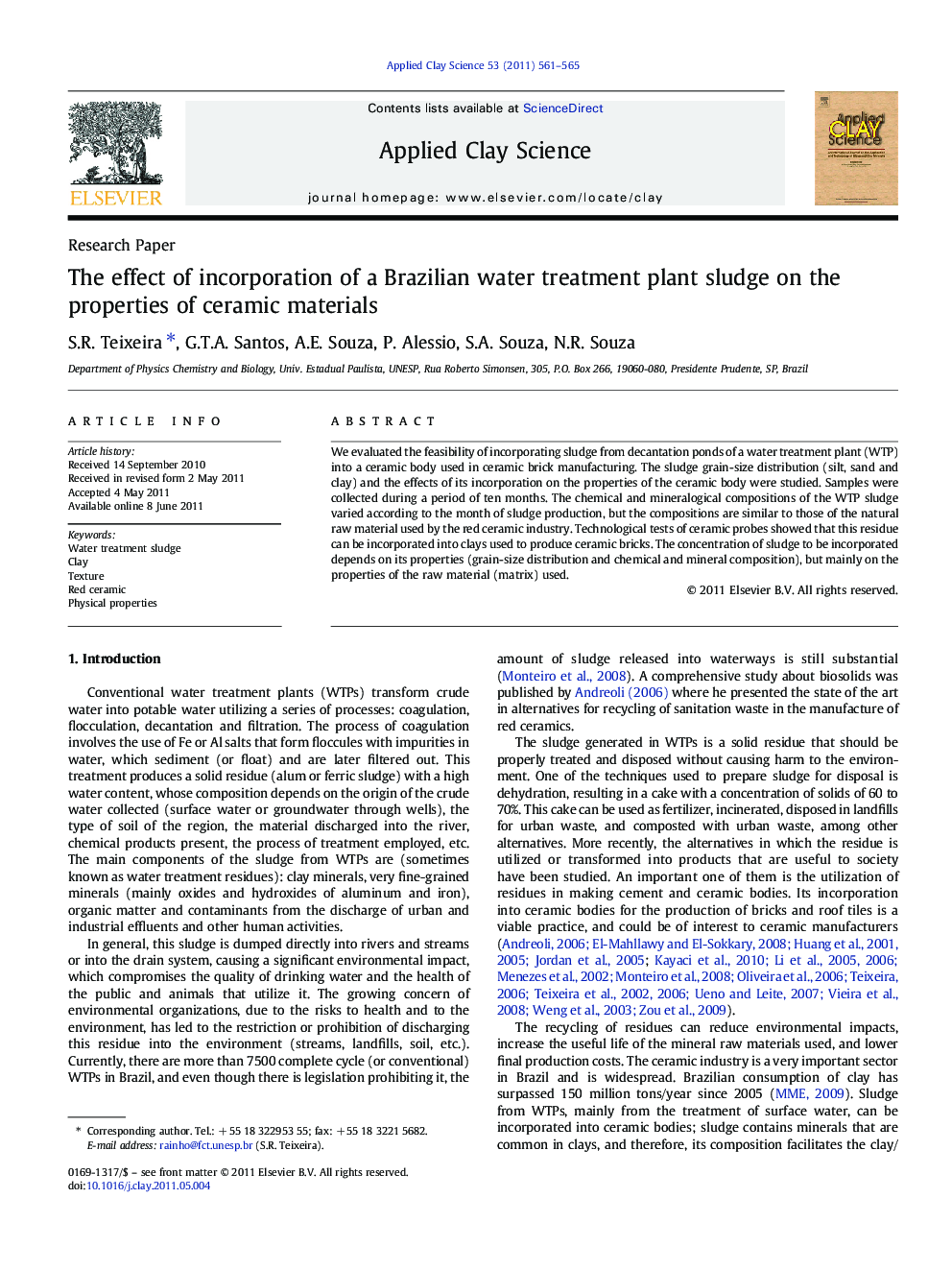| Article ID | Journal | Published Year | Pages | File Type |
|---|---|---|---|---|
| 1695410 | Applied Clay Science | 2011 | 5 Pages |
We evaluated the feasibility of incorporating sludge from decantation ponds of a water treatment plant (WTP) into a ceramic body used in ceramic brick manufacturing. The sludge grain-size distribution (silt, sand and clay) and the effects of its incorporation on the properties of the ceramic body were studied. Samples were collected during a period of ten months. The chemical and mineralogical compositions of the WTP sludge varied according to the month of sludge production, but the compositions are similar to those of the natural raw material used by the red ceramic industry. Technological tests of ceramic probes showed that this residue can be incorporated into clays used to produce ceramic bricks. The concentration of sludge to be incorporated depends on its properties (grain-size distribution and chemical and mineral composition), but mainly on the properties of the raw material (matrix) used.
Graphical abstractFigure optionsDownload full-size imageDownload as PowerPoint slideResearch Highlights► The sludge compositions varied according to the month of your production. ► Sludge has characteristics of plastic material (high clay minerals concentration). ► This residue can be incorporated into clays used to produce ceramic bricks. ► The sludge-wt% to be incorporated depends on its properties and of the raw material.
